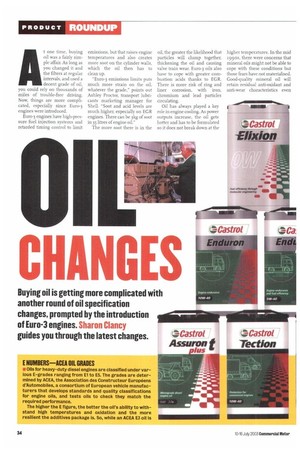E NUMBERS-ACEA OIL GRADES
Page 34

Page 35

If you've noticed an error in this article please click here to report it so we can fix it.
Oils for heavy-duty diesel engines are classified under various E-grades ranging from El to E5. The grades are determined by ACEA, the Association des Constructeur Europeens d'Automobiles, a consortium of European vehicle manufacturers that develops standards and quality classifications for engine oils, and tests oils to check they match the required performance.
The higher the E figure, the better the oil's ability to withstand high temperatures and oxidation and the more resilient the additives package is. So, while an ACEA E3 oil is adequate for Euro-2 engines, it is unlikely to be suitable for Euro-3. ACEA E4 or E5 oils are designed to cope with the higher demands of Euro-3 engines.
ACEA does not distinguish between mineral and synthetic oils but does demand classifications to be met by mineral oils where possible. This stance is one reason why, despite predictions that synthetics would be needed to meet the demands first of E4 and E5, that has not happened.
Despite ACEA testing, some engine manufacturers (MAN, MercedesBenz and Volvo, for example) still require approved oils to undergo additional tests to ensure they can cope with the particular characteristics of certain engines.




































































































































































